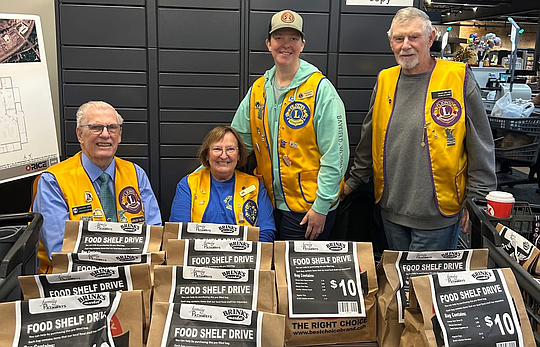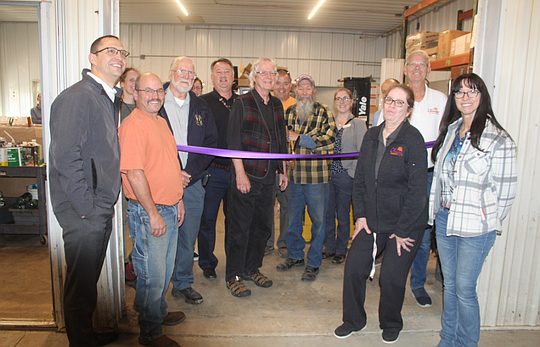August 1, 2019 at 8:35 a.m.
Local farmer finds solar 'crop' keeps pollinators happy
We only understand the tip of what bees, butterflies, etc. do in the vast ecology of things, Johnson commented, but it’s obvious that when they are not thriving, this can’t be ignored, he stated.
Johnson had solar panel arrays installed on land he owns about two years ago. It was no longer eligible for Conservation Reserve Program assistance and it doesn’t support crops or pasture.
The IPS company installed row upon row of solar panels and planted the site with native grasses and flowers, as required by code in Chisago County. But, Johnson didn’t just sit back and collect the solar company lease checks.
He knew the pollinator-friendly movement needed guys like him. What mainly attracted him, Johnson explains, is being able to do something to counteract negative effects on our air and water from heavy use of fossil fuels.
“The solar part was secondary, for me it was more about habitat,” Johnson said. It’s undeniable; the solar use created space for different types of insects and plant species to thrive undisturbed, while creating power brings revenue to pay the land taxes and allow Johnson to keep his property.
Johnson’s eight acre solar array on County Road 15, is now providing energy for 200 houses (annual average) and millions of native plants are attracting bees, butterflies.
Johnson carried his insight one step further and got active in a program bringing inner city youth and other science enthusiasts to Chisago County to collect photographic data and count bees.
As a member of the “Bee Squad” of the University of Minnesota throughout any Minnesota summer he’ll host various groups, stopping first at his farmstead near Little Lake, and then they’re off to do bee surveys at his solar array parcels. He had pollinator researchers from Nicaragua a couple weeks ago, and last week it was “Urban Roots” a Twin Cities youth group.
Bee Squad program manager Bridget Mendel Lee was walking the site and said she’s eager to see how much bee numbers in Chisago County will increase with solar array sites proliferating. Doing these bee surveys on sites over the years is a key research tool. Having property to go back to year-after-year is invaluable.
The “city” kids enjoyed being out in the wide open. One asked how many acres there are in a city block, and calculated how many “blocks” Johnson owns. (Depending on the configuration, there can be two to five acres in a normal city block, so Johnson would own the equivalent of the visitor’s whole neighborhood.)
Johnson was raised at a Minnesota resort, where he developed an appreciation for the water quality and ecology of Minnesota. He showed a reporter a small stand of milkweed spreading alongside an outbuilding, He will leave these alone and let them get established. He says he eased into this relationship with pollinators through this “enhancement.” Let the volunteer native flowering plants stay undisturbed. The bees and butterflies will find them on their own.





Comments:
Commenting has been disabled for this item.